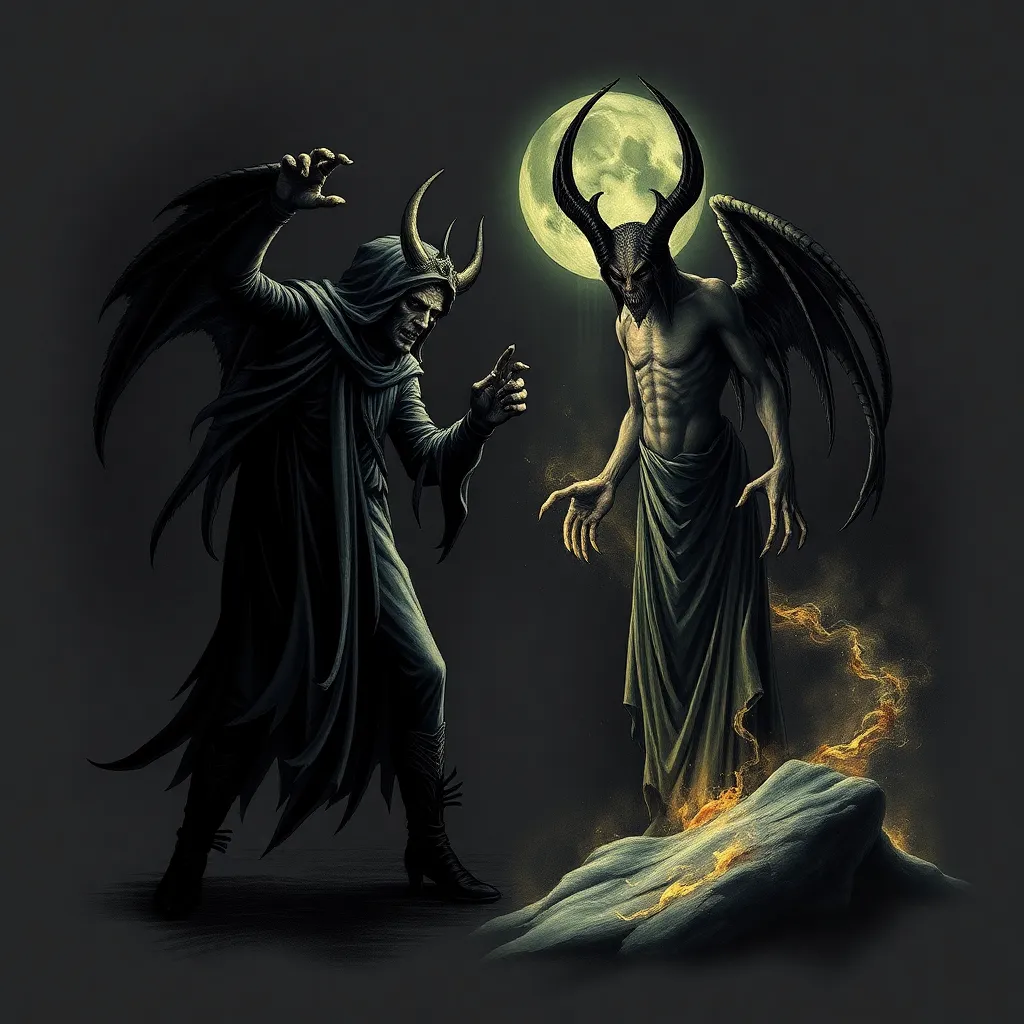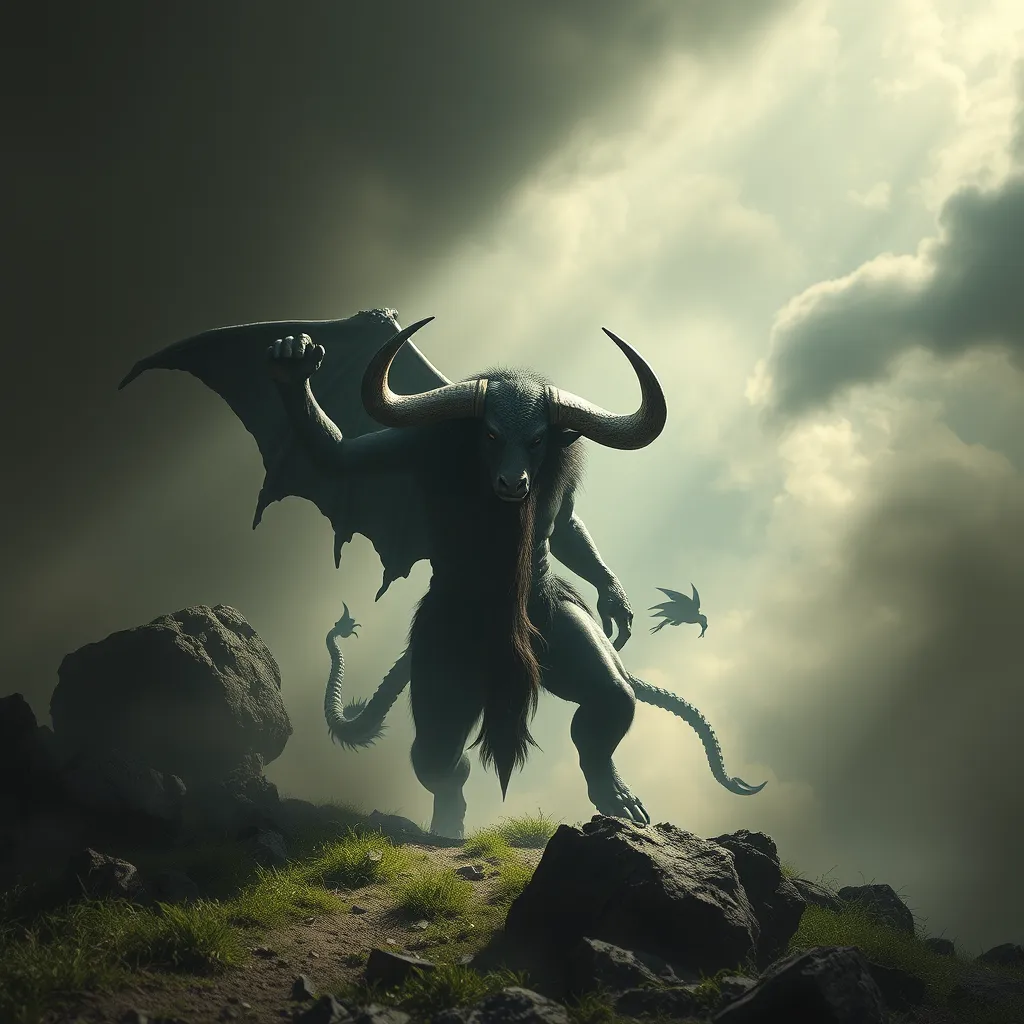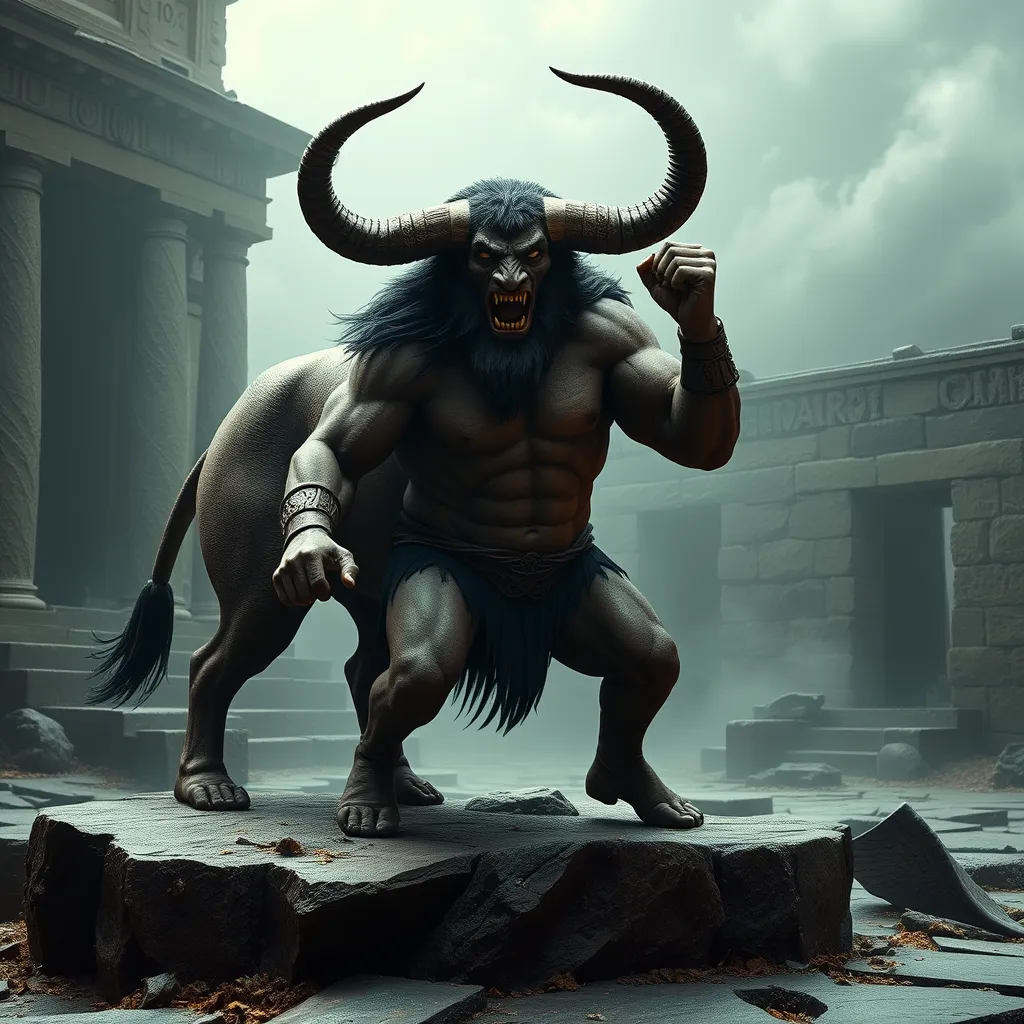The Dybbuk and the Demon: A Comparative Study of Supernatural Beings
I. Introduction
Supernatural beings have long captivated human imagination, weaving themselves into the fabric of folklore and cultural narratives across the globe. They embody our fears, hopes, and the mysteries of existence. Among these enigmatic entities, the Dybbuk from Jewish folklore and demons from various cultures stand out, each representing unique characteristics and themes.
This comparative study aims to delve into the origins, attributes, cultural representations, rituals, and modern interpretations of the Dybbuk and demons, illuminating their significance and the lessons they impart in contemporary society.
II. Historical Origins
A. The Dybbuk: Jewish Folklore and Kabbalistic Roots
The Dybbuk is rooted in Jewish mysticism and Kabbalistic thought, believed to be the wandering spirit of a deceased person who has not found peace. Emerging in the 16th century, it reflects the complexities of the soul’s journey and the consequences of unresolved emotional and spiritual issues.
B. Demons: Ancient Mesopotamian to Contemporary Interpretations
Demons have a rich history, traceable to ancient Mesopotamian civilizations where they were often seen as malevolent spirits causing chaos. Over centuries, interpretations evolved, with demons appearing in various religious texts, folklore, and literature, often symbolizing evil or temptation.
C. Evolution of Beliefs Surrounding These Supernatural Entities
Both the Dybbuk and demons have transformed over time, reflecting societal fears and philosophical inquiries into the nature of good and evil. While the Dybbuk embodies personal loss and unresolved trauma, demons often serve as allegories for internal conflicts and societal anxieties.
III. Characteristics and Attributes
A. Nature and Behavior of the Dybbuk
1. Possession and the Soul’s Journey
The Dybbuk is characterized by its ability to possess living individuals, typically seeking to communicate unresolved matters from its life. This possession is seen as a manifestation of the soul’s yearning for closure.
2. Emotional and Spiritual Implications
The emotional weight of a Dybbuk’s possession can lead to profound psychological disturbances, highlighting themes of grief, loss, and the need for spiritual healing within the context of Jewish beliefs.
B. Nature and Behavior of Demons
1. Types of Demons Across Cultures
- Christianity: Often depicted as fallen angels, embodying temptation and sin.
- Islam: Jinn are a variety of spirits, with some being benevolent and others malevolent.
- Buddhism: Mara represents the demons of distraction and temptation.
2. Manifestations and Abilities
Demons are often portrayed with various abilities, including shape-shifting, manipulation of the natural world, and influencing human behavior. Their manifestations can range from subtle whispers of doubt to overt acts of violence, reflecting the spectrum of human fears.
IV. Cultural Representation
A. The Dybbuk in Literature and Theater
The Dybbuk has been a significant figure in Jewish literature, most notably in S. Ansky’s play “The Dybbuk,” which explores themes of love, loss, and the struggle between the living and the dead. This narrative has resonated deeply within Jewish culture, reflecting the complexities of human emotion.
B. Demons in Art, Literature, and Popular Media
Demons have permeated global art and literature, from classical works like Dante’s “Inferno” to modern horror films such as “The Exorcist.” Each portrayal offers insights into societal fears and moral dilemmas, showcasing the multifaceted nature of these entities.
C. Comparative Analysis of Cultural Portrayals and Themes
While the Dybbuk is often tied to personal loss and the quest for redemption, demons frequently embody broader societal fears and existential struggles. Both serve as mirrors reflecting the human condition, yet they do so through different cultural lenses.
V. Rituals and Exorcisms
A. Traditional Methods of Dealing with a Dybbuk
In Jewish tradition, the exorcism of a Dybbuk often involves a rabbi performing rituals, prayers, and incantations. The focus is on healing the possessed individual and allowing the Dybbuk to find peace.
B. Exorcism Practices for Demons in Various Religions
- Christianity: Exorcism rituals are often conducted by priests, incorporating holy water, prayers, and relics.
- Islam: Ruqyah, or spiritual healing, uses verses from the Quran to expel malevolent spirits.
- Hinduism: Rituals may include chanting mantras and performing specific pujas to ward off evil spirits.
C. Comparative Effectiveness and Beliefs Surrounding These Rituals
Both Dybbuk exorcisms and demon expulsion rituals share a common goal of restoring balance and peace. However, their effectiveness is often viewed through the lens of cultural beliefs and the faith of those involved.
VI. Psychological and Social Implications
A. The Dybbuk as a Metaphor for Loss and Trauma
The Dybbuk serves as a powerful metaphor for unresolved grief and trauma, illustrating how emotional burdens can haunt individuals and communities. It emphasizes the importance of addressing these issues to find healing and closure.
B. Demons as Representations of Internal Conflict and Societal Fears
Demons often symbolize internal struggles and societal anxieties, representing fears related to morality, temptation, and chaos. They provoke discussions about the darker aspects of human nature and the consequences of unchecked desires.
C. The Impact of These Beings on Mental Health and Community Dynamics
The belief in Dybbuks and demons can influence mental health, shaping how individuals and communities understand and cope with psychological distress. These narratives can provide frameworks for discussing mental health issues, facilitating healing and understanding.
VII. Modern Interpretations and Adaptations
A. Contemporary Views on the Dybbuk in Modern Jewish Culture
In modern Jewish culture, the Dybbuk has been adapted in various artistic forms, continuing to evoke discussions about identity, loss, and the interplay between the living and the dead. Contemporary interpretations often emphasize the need for healing and reconciliation.
B. The Evolution of Demonology in the Digital Age
In the digital age, demonology has evolved with the rise of online horror narratives, video games, and films. These modern adaptations often reflect contemporary anxieties, blending traditional beliefs with new technologies and media.
C. Cross-Cultural Influences and Reinterpretations
The globalization of culture has led to cross-pollination of beliefs surrounding Dybbuks and demons, resulting in new interpretations that reflect a blend of traditional folklore and modern societal issues.
VIII. Conclusion
A. Summary of Key Findings from the Comparative Study
This comparative study highlights the rich tapestry of beliefs surrounding the Dybbuk and demons, showcasing their historical origins, cultural significance, and psychological implications. Both entities provide insights into the human experience, addressing themes of loss, conflict, and the search for understanding.
B. The Relevance of the Dybbuk and Demons in Today’s Society
In today’s society, the narratives surrounding the Dybbuk and demons continue to resonate, reflecting ongoing struggles with mental health, grief, and the complexities of human emotions. They serve as reminders of the importance of confronting our fears and seeking healing.
C. Final Thoughts on the Enduring Power of Supernatural Narratives
The enduring power of supernatural narratives, such as those of the Dybbuk and demons, lies in their ability to speak to universal human experiences. They invite exploration of our deepest fears and hopes, fostering a greater understanding of ourselves and the world around us.




